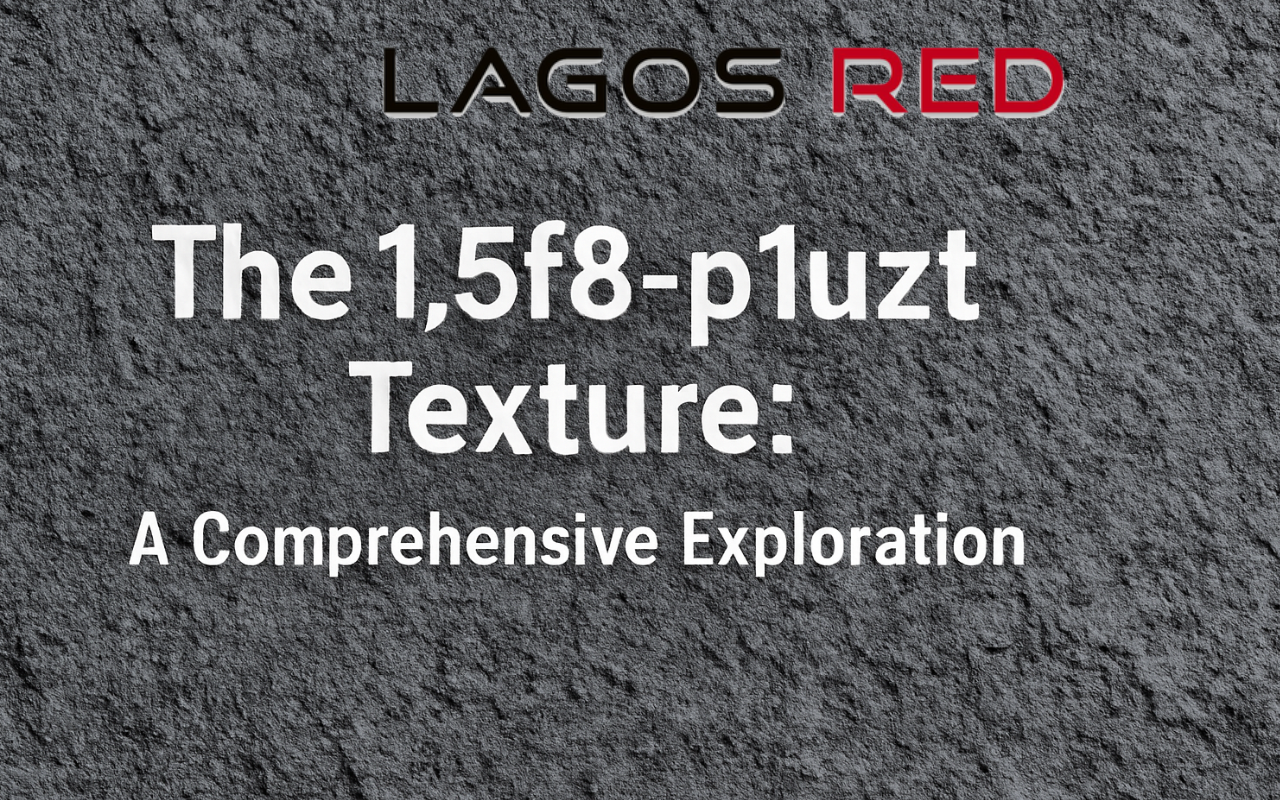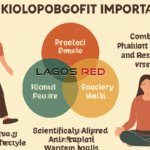Introduction
When it comes to creating highly detailed and performance-optimized textures for 3D modeling, the 1.5f8-p1uzt texture format stands out as a powerful solution. This advanced texture format was designed specifically to handle the demands of modern rendering engines, offering a unique combination of visual quality and optimized performance. As industries such as gaming, architecture, and virtual reality (VR) continue to evolve, the need for high-fidelity textures that do not compromise on performance becomes increasingly important. In this guide, we will dive deep into the characteristics, applications, and advantages of the 1.5f8-p1uzt texture, providing you with a full understanding of its significance and potential.
What Is the 1.5f8-p1uzt Texture?
At its core, the 1.5f8-p1uzt texture is a specialized digital format tailored to enhance visual quality in 3D rendering, while ensuring optimal system performance. The name itself, “1.5f8-p1uzt,” is a technical reference that signifies certain attributes of the texture, such as its version and precision levels. The “1.5” in the name refers to the version of the format, while “f8” indicates an 8-bit floating-point precision, allowing for efficient handling of color data with minimal impact on memory. The “p1uzt” part identifies the specific variant or profile of the texture, which provides unique characteristics suited to different rendering needs.
One of the standout features of the 1.5f8-p1uzt texture is its ability to offer high-resolution visuals without burdening the system’s performance. This is achieved through advanced compression techniques that maintain the clarity of textures while reducing their file sizes by up to 70%. As a result, these textures load faster and are more efficient for use in real-time applications such as gaming and virtual reality. The format was developed with the goal of supporting the growing demands of next-generation visual experiences in digital environments.
This texture format is particularly advantageous in the realm of 3D graphics, where achieving high-quality textures that render quickly and smoothly can often be a challenge. Whether you are working on a video game, an architectural visualization, or a virtual world simulation, the 1.5f8-p1uzt format offers a level of performance and realism that is essential for the most demanding creative projects. Its development marks a significant advancement in texture technology, as it addresses both aesthetic needs and system efficiency, allowing for more intricate and immersive digital environments.
The Evolution of Texture Formats
Texture formats have come a long way since the early days of digital graphics. Initially, formats such as BMP and JPEG were the go-to choices, providing basic image storage capabilities but lacking in terms of 3D rendering efficiency. These early formats were static, offering little to no support for transparency or depth, both of which are crucial for modern rendering techniques. As 3D graphics gained popularity, formats like PNG and DDS began to dominate, introducing features like alpha channels for transparency and support for mipmapping to improve performance in real-time rendering scenarios.
The shift toward more advanced texture formats was largely driven by the need for higher visual fidelity in real-time applications, particularly in video games and virtual reality. As the capabilities of GPUs and rendering engines grew, so did the demands for textures that could handle the increased level of detail. This is where the 1.5f8-p1uzt format comes into play. With its floating-point precision and efficient compression methods, it represents a new standard in texture technology, balancing high-quality visual output with minimal resource consumption.
One of the key factors that set the 1.5f8-p1uzt texture apart from its predecessors is its ability to seamlessly integrate into modern workflows. Whether you are using Blender for 3D modeling, Unreal Engine for game development, or Unity for creating interactive simulations, this format is designed to work with a wide range of software tools. Its compatibility ensures that designers and developers can adopt the format without significant changes to their existing pipelines, making it a versatile choice for a wide variety of digital projects.
Key Features of the 1.5f8-p1uzt Texture
The 1.5f8-p1uzt texture format offers several key features that set it apart from traditional texture formats. Designed to meet the increasing demands of modern rendering engines and 3D modeling software, it provides a blend of high-resolution support, efficient compression, and advanced compatibility. Whether you are working in game development, VR, or architectural visualization, understanding these core features will help you make the most of this powerful texture format.
High-Resolution Support
One of the most impressive features of the 1.5f8-p1uzt texture is its support for high-resolution textures. In digital design, detail is crucial, and this format offers resolutions of up to 4096×4096 pixels. Such high resolution ensures that textures appear sharp and detailed, even when viewed up close, making it ideal for creating realistic 3D models of environments, characters, or objects. This is particularly important in applications where texture clarity and realism are essential, such as architectural visualization or high-end gaming.
The ability to support these resolutions without compromising performance is another significant advantage of the 1.5f8-p1uzt texture. Unlike traditional high-resolution textures that can often be too large for real-time applications, this format uses advanced compression techniques to keep file sizes manageable. This means that designers and developers can achieve stunning visual quality without overloading the system’s memory or processing power. For industries that require detailed textures in real-time applications, this feature is indispensable.
Additionally, the support for high-resolution textures in the 1.5f8-p1uzt format allows for greater flexibility in creative projects. For instance, in architectural visualization, every brick, tile, or surface can be rendered with incredible detail, enhancing the realism of the final render. Similarly, in video games, character models and environments can be presented with rich textures that immerse players in a more believable world. The high-resolution capabilities of this format are a game-changer for those working on projects that demand the highest level of detail.
Efficient Compression
Efficient compression is a core feature of the 1.5f8-p1uzt texture, and it plays a crucial role in optimizing performance. In traditional texture formats, high-resolution images often lead to large file sizes, which can slow down rendering times and increase memory usage. With the 1.5f8-p1uzt format, however, the textures are compressed by up to 70% without sacrificing visual quality. This means that files take up less space in storage and are faster to load, which is essential for real-time rendering in environments like video games or VR.
This efficient compression does not only benefit developers in terms of performance; it also impacts user experience. Faster load times and smoother performance contribute to a more fluid and immersive experience for end users. In gaming, for example, players will notice fewer delays between scenes or environments, creating a more seamless and enjoyable experience. Likewise, VR environments can be rendered more efficiently, leading to smoother interactions and less strain on the system, which is crucial for maintaining immersion and reducing motion sickness.
Moreover, this compression technology extends the life of hardware. As the demand for high-quality textures grows, system resources become a limiting factor. The 1.5f8-p1uzt format helps alleviate this issue by reducing the strain on both memory and processing power. This means that even developers working on lower-end systems can still incorporate high-quality textures into their projects, making this format accessible to a wider range of users and creators.
Compatibility with Leading Software
Another key advantage of the 1.5f8-p1uzt texture is its broad compatibility with major 3D modeling and game development software. Whether you are working in Blender, Unreal Engine, or Unity, the 1.5f8-p1uzt format integrates seamlessly into these platforms. This compatibility ensures that the texture format can be adopted without requiring significant changes to existing workflows or pipelines, allowing designers and developers to focus on their creative work rather than technical adjustments.
For 3D artists, this means that they can incorporate the 1.5f8-p1uzt texture into their projects with minimal hassle. Simply import the texture into the software, apply it to the model, and adjust as needed. The texture will automatically scale and perform optimally based on the resolution and hardware specifications of the system, making it a versatile and reliable choice for various industries. Whether the project requires detailed character models, expansive virtual environments, or photorealistic architectural renders, this format supports it all.
Additionally, the compatibility of the 1.5f8-p1uzt texture with industry-standard tools means that it is widely accepted by professionals across different fields. Game developers, architects, animators, and visual effects artists can all benefit from using this texture format, making it a universal solution for those in the creative industries. This broad compatibility is one of the reasons why the 1.5f8-p1uzt texture has gained traction and become a go-to format for high-performance, visually stunning digital work.
Applications of the 1.5f8-p1uzt Texture
The 1.5f8-p1uzt texture format is designed to serve a wide range of industries and applications, providing an ideal solution for high-quality, real-time rendering. With its optimized compression and high-resolution support, this texture format is particularly effective in fields that demand both visual fidelity and performance efficiency. From gaming and virtual reality (VR) to architectural visualization and film production, the 1.5f8-p1uzt texture is revolutionizing the way textures are used across different creative sectors. Let’s explore how this texture format enhances several key industries.
Gaming and Virtual Reality
The 1.5f8-p1uzt texture format is especially beneficial in the gaming and virtual reality (VR) sectors, where performance and visual fidelity are key. In gaming, the texture format allows for high-quality assets that load quickly and render smoothly, even in complex environments with intricate details. Whether creating detailed landscapes, realistic characters, or immersive environments, the 1.5f8-p1uzt texture enables game developers to elevate their projects without sacrificing performance.
VR developers also find this texture format valuable, as it supports the high level of detail required for creating lifelike, immersive virtual worlds. In VR, every texture matters, as even small imperfections can break the illusion of realism. The 1.5f8-p1uzt texture ensures that objects in VR environments look crisp and clear, enhancing user immersion. Furthermore, its efficient compression reduces lag and improves the overall fluidity of VR experiences, which is essential for preventing motion sickness in users.
The combination of visual quality and performance makes the 1.5f8-p1uzt texture format a preferred choice for both gaming and VR projects. By providing rich, high-resolution textures that load quickly and render seamlessly, it enhances the player’s experience while maintaining system stability. For game developers and VR creators aiming to push the boundaries of realism and interactivity, this texture format is a powerful tool.
Architectural Visualization
In architectural visualization, the ability to create highly realistic digital representations of buildings, interiors, and landscapes is crucial. The 1.5f8-p1uzt texture excels in this domain, offering the level of detail and realism required for architectural renders. Whether it’s the intricate textures of a building’s façade, the fine details of an interior space, or the realistic rendering of natural environments, this texture format ensures that every surface is depicted with lifelike precision.
Architects and designers use the 1.5f8-p1uzt texture to create photorealistic visualizations that help clients better understand design concepts. The texture’s high-resolution support enables even the smallest design elements—such as the grain of wood, the surface of concrete, or the texture of fabrics—to be rendered in stunning detail. This makes the design process more intuitive, allowing stakeholders to visualize how the final product will look before construction begins.
Moreover, the efficient compression of the 1.5f8-p1uzt texture format allows architectural visualizations to be more interactive. Clients can explore designs in real-time, rotate views, and zoom in on details without experiencing long load times or performance lags. This real-time interaction is crucial for architectural presentations, making the design process more engaging and helping to communicate ideas more effectively.
Film and Animation
The film and animation industries also benefit from the 1.5f8-p1uzt texture, especially in the creation of detailed CGI elements. In movies and animations, CGI is used to create everything from realistic characters to elaborate environments. To achieve photorealism, textures need to be not only high-quality but also capable of responding to complex lighting and shading scenarios. The 1.5f8-p1uzt texture handles these requirements efficiently, offering textures that look incredibly realistic under various lighting conditions.
Film studios and animation houses can use the 1.5f8-p1uzt texture format to create stunning digital environments that seamlessly blend with live-action footage. Whether it’s a futuristic cityscape or a magical fantasy world, the ability to render textures in such detail helps bring imaginative worlds to life. The texture’s floating-point precision ensures that subtle lighting effects, like reflections and shadows, are accurately depicted, adding depth and realism to the final render.
Moreover, as film and animation projects often involve large amounts of digital assets, the compression technology used in the 1.5f8-p1uzt texture becomes particularly useful. It reduces the storage and processing requirements for large-scale productions, allowing studios to handle complex scenes with multiple layers of textures without overwhelming their hardware. For animators and filmmakers, this balance of visual quality and efficiency is key to creating high-end visual effects.



